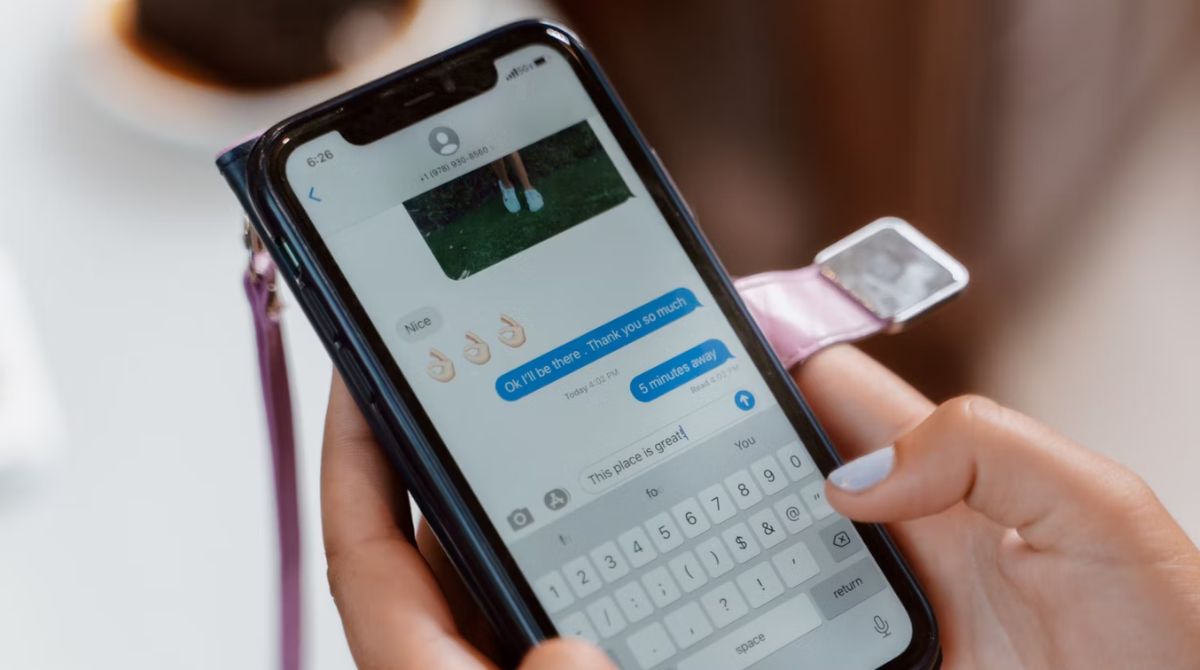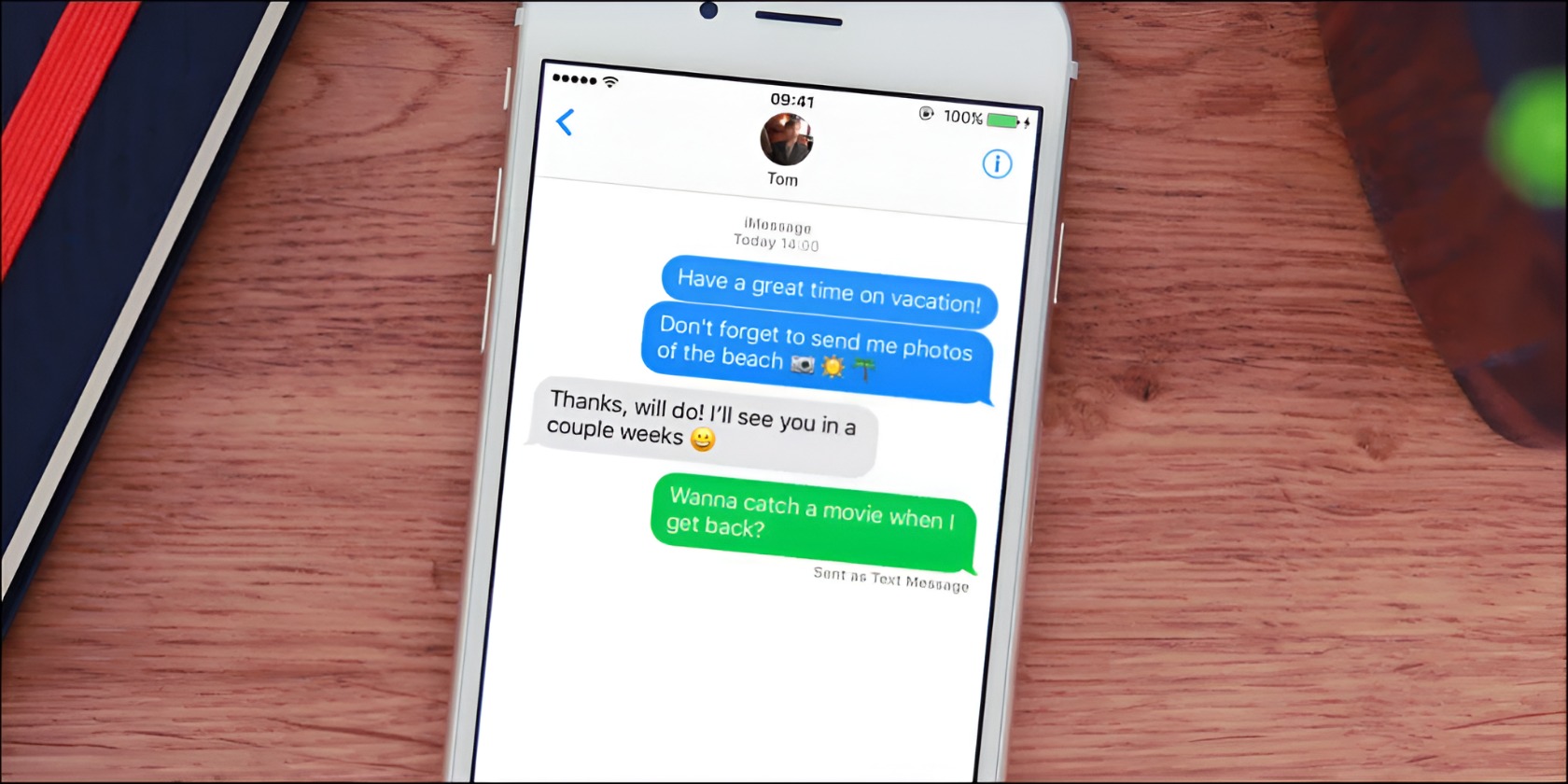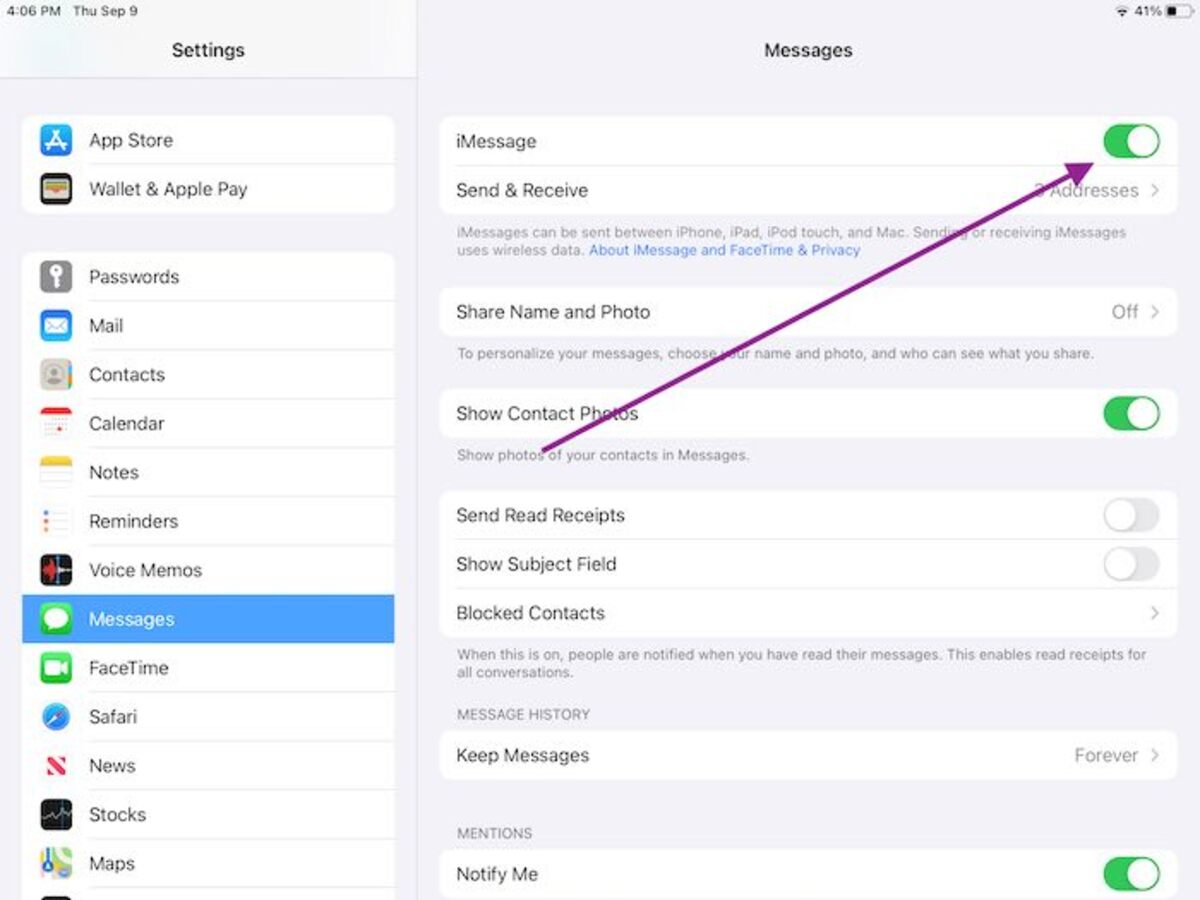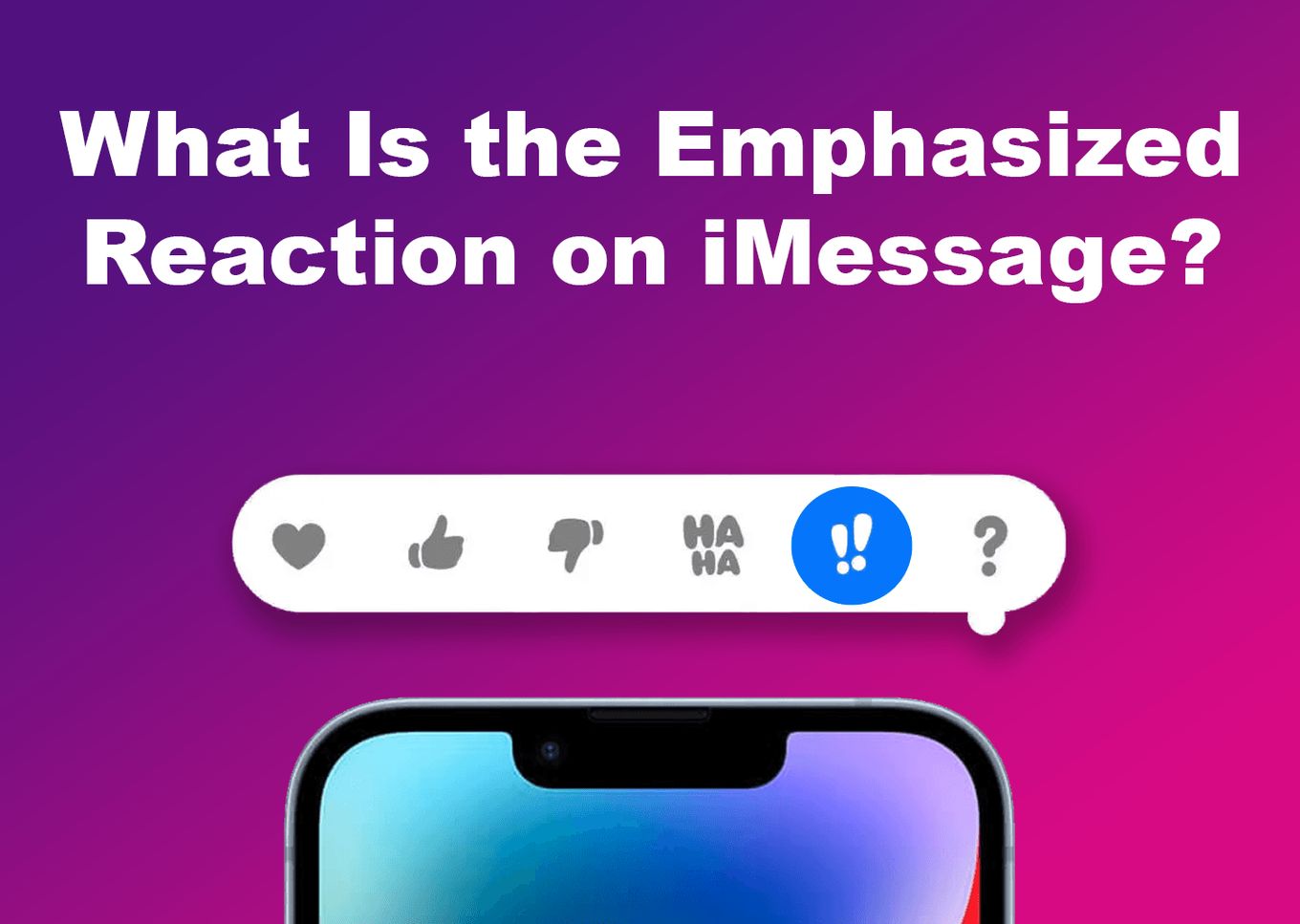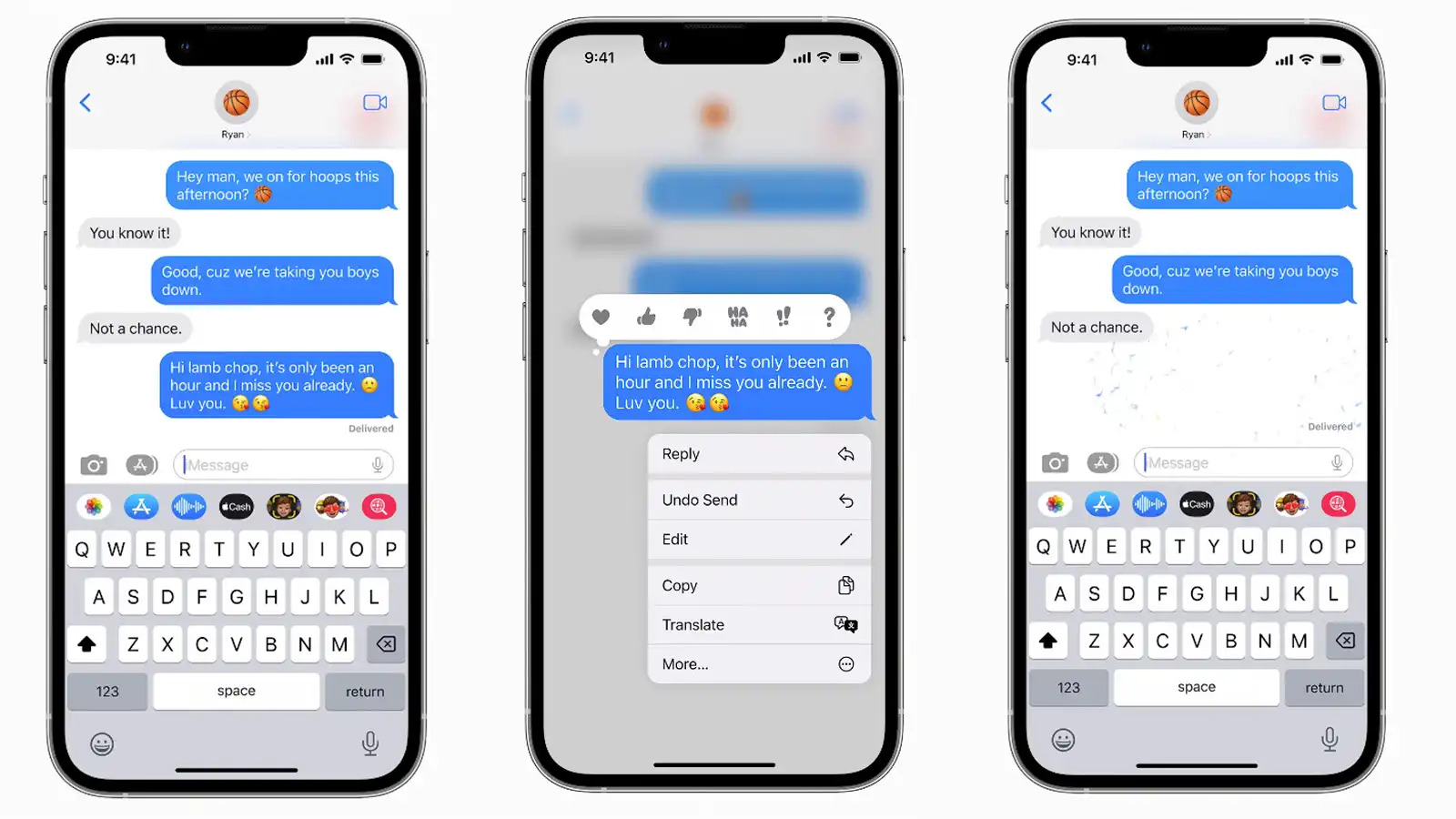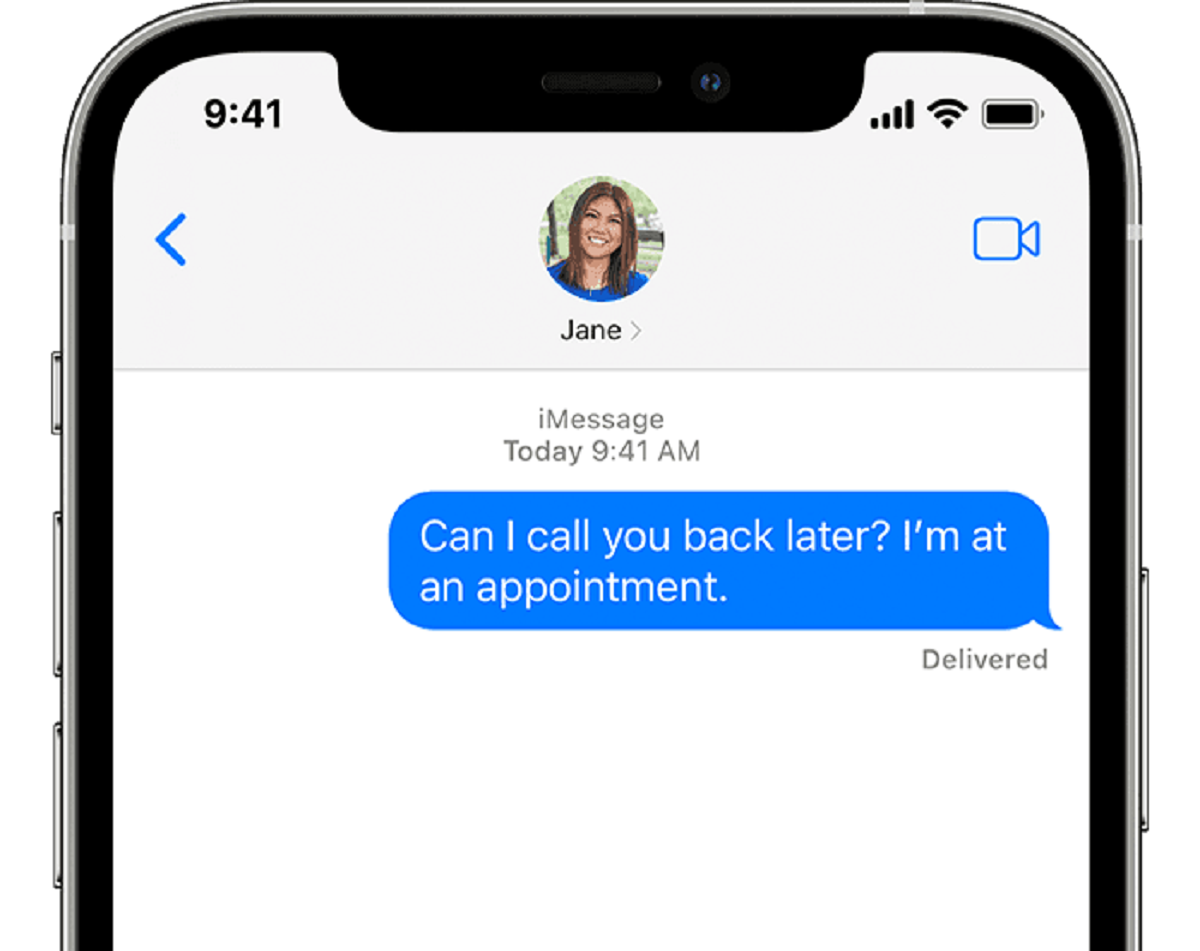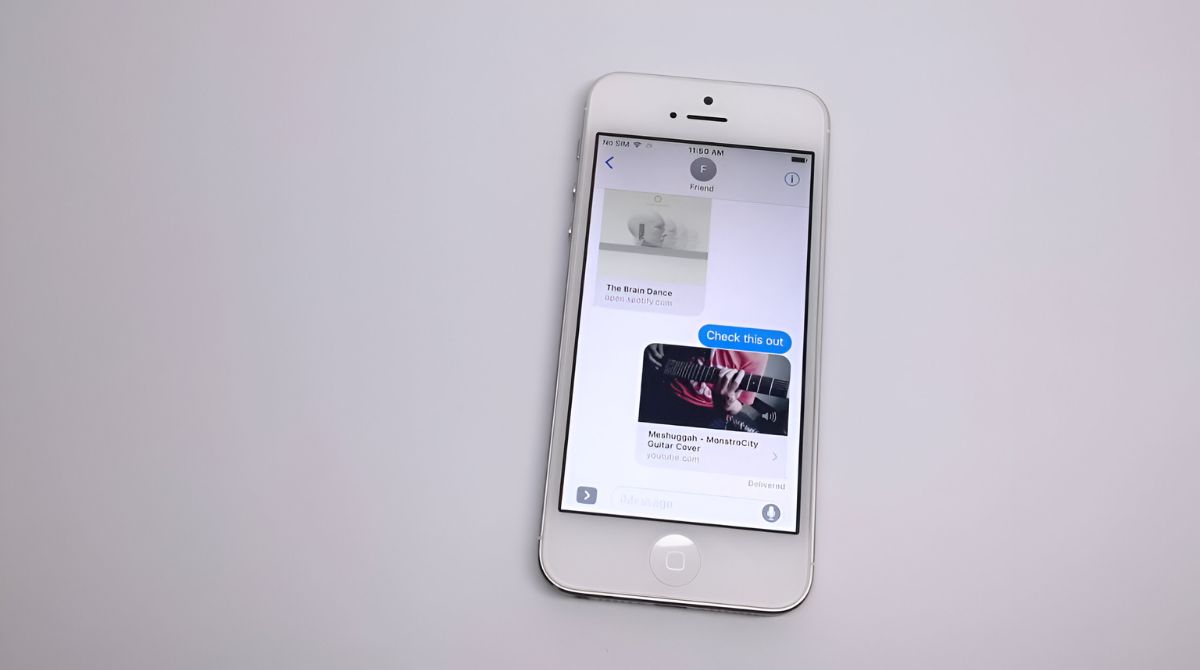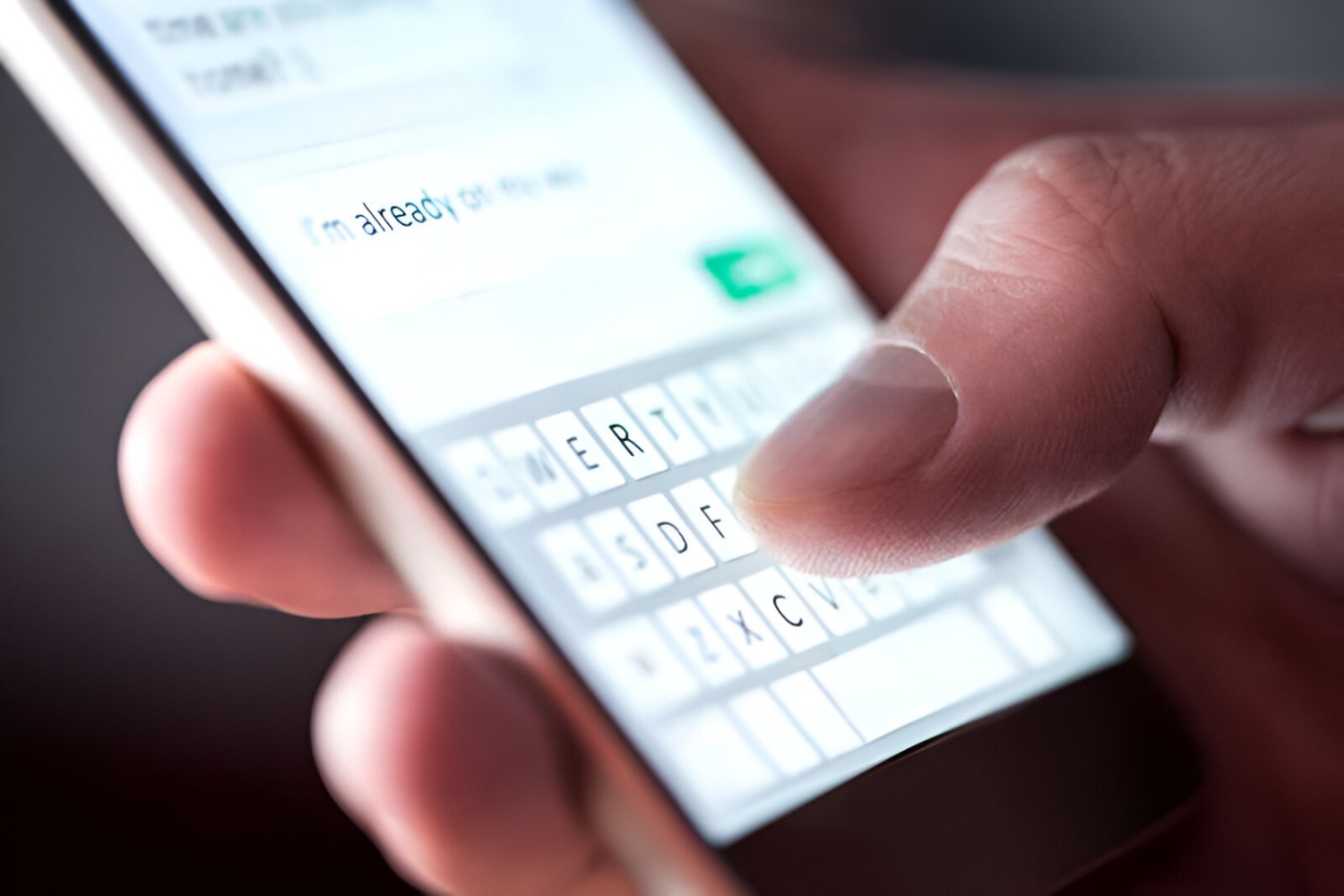Possible Reasons Why iMessage Sends as Text Message
Are you experiencing the frustrating issue of your iMessage sending as a text message instead of using the internet-based iMessage service? Several factors can contribute to this problem, ranging from connectivity issues to device settings. Let’s explore some possible reasons why this may be happening:
- Poor or No Internet Connection: One of the primary reasons why iMessage may default to sending as a text message is a poor or no internet connection on either your device or the recipient’s device. Without a stable internet connection, iMessage cannot operate properly.
- iMessage is Disabled: Check if iMessage is enabled on your device. If it’s disabled, your messages will automatically be sent as text messages. To fix this, go to your device settings, select “Messages,” and ensure that the iMessage option is toggled on.
- iMessage Activation Issues: Sometimes, iMessage faces activation issues, especially when you switch devices or change phone numbers. In such cases, you may need to re-register your device or contact your cellular carrier for assistance.
- Apple Server Problems: Occasionally, Apple’s servers can experience temporary issues or undergo maintenance, preventing iMessage from functioning correctly. In such cases, you’ll have to wait for Apple to resolve the server problems.
- Contact is Not an iPhone User: If you’re trying to send an iMessage to a contact who does not use an iPhone or Apple device, your message will automatically be sent as a text message. iMessage only works between Apple devices.
- Contact Has Disabled iMessage: Your messages may be defaulting to text messages if the recipient has deliberately disabled iMessage on their device. It’s worth confirming with the contact if they have iMessage enabled.
- Contact has a Non-Apple Device: Even if the recipient has an Apple device, if they are currently using a non-Apple device, like an Android phone or Windows PC, your iMessage will not work, and your message will be sent as a text message.
- You’ve Exceeded Your Monthly Data Limit: If you’ve exceeded your monthly data limit, your device may switch to sending messages as text messages instead of using the internet. Monitor your data usage and check with your cellular provider if you suspect this is the issue.
- Incorrect Settings in Messages App: Ensure that your Messages app settings are configured correctly. Check if any specific settings, such as “Send as SMS” or “MMS Messaging,” are enabled, as these could force your messages to be sent as text messages.
- Contact is in an Area without Cellular Coverage: If the recipient’s device is in an area without cellular coverage, your iMessage will not go through, and instead, your message will be sent as a text message.
- Software Bugs or Glitches: Occasionally, software bugs or glitches in the operating system or Messages app can cause iMessage to malfunction. Keeping your device software up to date can help resolve these issues.
- Carrier Limitations: Some cellular carriers impose restrictions on iMessage usage or may not support iMessage completely. Check with your carrier to ensure there are no limitations or issues that could prevent iMessage from working correctly.
By examining these potential reasons, you can troubleshoot and determine why your iMessage is sending as a text message. However, if the issue persists, seeking assistance from Apple support or your cellular provider may be necessary for a more in-depth resolution.
Poor or No Internet Connection
A common reason why iMessage may default to sending as a text message is a poor or no internet connection. Without a stable internet connection, iMessage cannot operate properly and falls back to traditional SMS messaging. Here are some insights into this particular issue:
If you or the recipient are experiencing a weak or intermittent internet connection, it can disrupt the functionality of iMessage. Since iMessage relies on an active internet connection, any disruption can cause it to switch to SMS messaging automatically. This is because SMS messages can be sent and received via the standard cellular network, which does not require a consistent internet connection.
To troubleshoot this issue, start by checking your device’s internet connection. Make sure you are connected to a stable Wi-Fi network or have a strong cellular data signal. Similarly, verify that the recipient’s internet connection is also functioning correctly. You can do this by asking them to confirm their internet connectivity and checking if other internet-dependent applications are working for both your and their device.
If you find that the issue persists despite having a stable internet connection, try restarting your device. Sometimes, a simple reboot can help refresh the system and resolve any temporary connectivity issues that may arise.
Moreover, if you are using Wi-Fi, ensure that there are no restrictions or limitations imposed by the network you are connected to. Some public or corporate networks may restrict certain services, including iMessage, to prevent excessive data usage. Contact the network administrator or switch to a different network to see if it resolves the problem.
It’s also worth noting that using a virtual private network (VPN) on your device may affect the functionality of iMessage. VPNs can sometimes interfere with the connection, causing iMessage to switch to text messaging. Try disabling the VPN temporarily to see if it resolves the issue.
If the problem persists despite having a stable internet connection, it may be necessary to contact your internet service provider or cellular carrier for further assistance. They can help identify any potential network issues or settings that could be affecting your ability to use iMessage properly.
In summary, a poor or no internet connection is a common reason why iMessage may default to sending as a text message instead of using the internet-based iMessage service. By ensuring a stable internet connection, restarting your device, checking network restrictions, and considering the impact of VPN usage, you can resolve connectivity issues and restore iMessage functionality.
iMessage is Disabled
If your iMessage is sending as a text message, one possibility is that iMessage is disabled on your device. When iMessage is turned off, your messages will automatically be sent as traditional SMS messages. Here’s what you need to know about this potential issue:
To check if iMessage is disabled on your device, follow these steps:
- On an iPhone or iPad, go to “Settings” and tap on “Messages”. Ensure that the toggle for iMessage is switched on.
- On a Mac, open the Messages app and go to “Preferences”. Make sure the iMessage option is enabled in the “Accounts” tab.
If you find that iMessage is indeed disabled, toggle it on and try sending an iMessage again. It should now use the internet-based service instead of sending as a text message.
Keep in mind that if you recently switched to a new device, iMessage may be disabled by default. In such cases, you will need to enable it manually. Additionally, some users may disable iMessage temporarily for various reasons, so confirming that it’s still enabled is crucial.
If you are using multiple Apple devices, such as an iPhone, iPad, and Mac, ensure that iMessage is enabled on all devices using the same Apple ID. This will allow for seamless syncing of messages across devices and prevent any conflicts that may result in messages being sent as text messages.
It’s important to note that enabling iMessage may require an active internet connection. If you do not have an internet connection at the moment, enable iMessage when the connection is available, and it will automatically revert to using the service once the internet connection is established.
If enabling iMessage does not resolve the issue and your messages are still being sent as text messages, consider restarting your device. Sometimes, a simple reboot can help refresh the system and resolve any temporary settings or configuration issues that may be affecting iMessage.
In summary, if your iMessage is disabled, it will default to sending messages as text messages. Check the settings on your device to ensure that iMessage is enabled. By enabling iMessage and ensuring it’s active on all connected devices, you should be able to use the internet-based service for sending messages instead of relying on traditional SMS.
iMessage Activation Issues
If iMessage is not activated or experiences activation issues, it can cause your messages to be sent as text messages instead of using the iMessage service. Activation issues can arise when you switch devices or change phone numbers. Let’s delve into this potential reason for your iMessage sending as a text message:
When you first set up your Apple device or change phone numbers, iMessage needs to be activated. This process typically happens automatically, but in some cases, it may encounter activation issues. Here’s what you can do to troubleshoot this problem:
1. Check your internet connection: Ensure that you have a stable internet connection. iMessage activation requires an active internet connection, either through Wi-Fi or cellular data.
2. Restart your device: Sometimes, a simple reboot can resolve activation issues. Restart your device and try activating iMessage again.
3. Update your device software: Outdated software versions can sometimes interfere with the activation process. Make sure your device is running the latest iOS or macOS version. Go to “Settings” on your device, tap “General,” and select “Software Update” to check for any available updates.
4. Confirm your Apple ID: Ensure that you’re signed in with your Apple ID on the device. Go to “Settings,” tap your name, and select “iTunes & App Store.” If you’re not signed in, sign in with your Apple ID and try activating iMessage again.
5. Contact your cellular carrier: If the activation issues persist, it may be necessary to contact your cellular carrier for assistance. Sometimes, the carrier may need to update their systems or make adjustments to your account to resolve the iMessage activation problem.
6. Try a different Wi-Fi network: If you’re experiencing activation issues while connected to a specific Wi-Fi network, try connecting to a different network. Some networks may have restrictions or firewall settings that hinder the activation process.
7. Wait and try again later: In some cases, iMessage activation issues may be temporary. It’s possible that Apple’s servers are experiencing high demand or undergoing maintenance. Wait for some time and try activating iMessage again later.
If none of these steps resolve the activation issues, it may be necessary to contact Apple Support for further assistance. They can provide guidance specific to your device and help troubleshoot any underlying issues that may be hindering iMessage activation.
In summary, activation issues can prevent iMessage from functioning correctly, causing your messages to be sent as text messages. By checking your internet connection, restarting your device, updating the software, confirming your Apple ID, contacting your cellular carrier, trying a different Wi-Fi network, or waiting for server issues to resolve, you can potentially resolve iMessage activation issues and utilize the internet-based iMessage service.
Apple Server Problems
If you’re experiencing the issue of iMessage sending as a text message, it’s important to consider the possibility of Apple server problems. Temporary disruptions or maintenance on Apple’s servers can impact the functionality of iMessage. Here’s what you should know about this potential cause:
Apple’s iMessage service relies on its servers to facilitate communication between Apple devices. From time to time, these servers may experience issues that affect the normal operation of iMessage. When these problems occur, you may find that your iMessage messages are sent as text messages instead.
If you suspect that Apple’s servers may be causing your iMessage issues, there are a few steps you can take to troubleshoot the problem:
1. Check Apple’s system status: Visit Apple’s System Status page (https://www.apple.com/support/systemstatus/) to see if there are any reported issues with iMessage. If there is a problem listed, it is likely that the server issue is causing your iMessage to send as a text message. In this case, you will need to wait until Apple resolves the server problem.
2. Wait and try again later: Server issues can be temporary and may resolve on their own. If there are no reported server problems, try waiting for some time and then sending an iMessage again. The issue might be resolved once Apple’s servers stabilize.
3. Contact Apple Support: If the problem persists and there are no reported server issues, it’s advisable to reach out to Apple Support for further assistance. They can provide specific guidance based on your device and help troubleshoot any underlying issues or suggest additional troubleshooting steps.
It’s important to note that server problems are outside of your control and require Apple’s intervention to resolve. Patience is key during such situations. Keep an eye on Apple’s system status page for updates on the server issues and follow any instructions provided by Apple.
In summary, iMessage sending as a text message could be due to Apple server problems. Checking Apple’s system status, waiting for the issues to be resolved, and contacting Apple Support for assistance are recommended steps. By staying informed and seeking appropriate help, you can navigate through any temporary Apple server problems that may affect the functionality of iMessage.
Contact is Not an iPhone User
If your iMessage is sending as a text message, one possible reason could be that the contact you’re messaging is not using an iPhone or any other Apple device. iMessage is exclusively available on Apple devices, and it requires both the sender and the recipient to have an Apple device in order to function. Here’s what you need to know about this particular situation:
iMessage offers a seamless messaging experience between Apple devices, allowing users to send messages, photos, videos, and more over the internet. However, when you send an iMessage to someone who is not using an iPhone or an Apple device, your message will automatically be sent as a standard text message.
To determine if the contact you’re messaging is using an iPhone or an Apple device, consider the following:
1. Check for blue vs. green bubbles: When you send an iMessage to an iPhone user, the outgoing messages appear in blue bubbles. However, if the recipient is not using an iPhone, the messages will be sent as text messages, and the bubbles will appear green instead.
2. Ask the contact about their device: Reach out to the contact and inquire about the type of phone or device they are using. If they are not using an iPhone or Apple device, it means they do not have access to iMessage.
3. Confirm with other Apple device users: Check with mutual contacts who have iPhones or Apple devices and have messaged the same person. They can provide insight into whether the contact in question uses an iPhone or not.
If you confirm that the contact is not an iPhone user or does not have any Apple device, it’s important to understand that your iMessages will not be received as iMessages on their device. Instead, they will receive the messages as text messages or SMS.
When messaging non-iPhone users, keep in mind that standard text messages have limitations compared to iMessages. Features such as read receipts, message effects, and end-to-end encryption are exclusive to iMessage and will not be available in text message form.
If you prefer to send messages using iMessage-like features to non-iPhone users, consider using alternative messaging platforms that are available cross-platform, such as WhatsApp or Facebook Messenger. These messaging apps offer similar functionality and can provide a better experience when communicating with contacts who do not have iPhones.
In summary, if your iMessage is sending as a text message, it could be because the recipient is not using an iPhone or any other Apple device. Confirm the contact’s device status by checking the color of the message bubbles, asking them directly, or consulting other mutual contacts. Be aware of the limitations of text messaging and consider using cross-platform messaging apps for a more feature-rich communication experience with non-iPhone users.
Contact Has Disabled iMessage
If your iMessage is sending as a text message, one possible reason is that the recipient has disabled iMessage on their device. Disabling iMessage prevents them from receiving messages through the iMessage service and forces the messages to be sent as standard text messages instead. Here’s what you need to know about this situation:
When a contact disables iMessage on their iPhone or Apple device, it means that they have chosen not to use the iMessage feature for their messaging. This could be a deliberate decision due to personal preferences, data usage concerns, or other reasons. It’s important to respect their choice and adjust your messaging method accordingly.
To determine if the recipient has disabled iMessage, you can try the following:
1. Observe the color of the message bubbles: When you send a message to someone with iMessage enabled, the outgoing messages appear in blue bubbles. However, if the recipient has disabled iMessage, the messages will be sent as green text messages.
2. Ask the recipient directly: Reach out to the contact and inquire if they have intentionally disabled iMessage. They can confirm whether iMessage is disabled on their device.
If you confirm that the recipient has indeed disabled iMessage, it’s important to adapt your messaging method accordingly. When texting someone who has disabled iMessage, it’s recommended to send your messages as standard text messages. This ensures that your messages will be delivered and received correctly, even though they won’t have access to the exclusive features of iMessage.
Keep in mind that disabling iMessage is a personal choice and may not necessarily indicate any issues with your device or messaging service. However, if you feel that there may be a misunderstanding or if the recipient is not intentionally disabling iMessage, it’s worth confirming the situation with them and finding a suitable resolution.
Additionally, if the recipient has an Apple device other than an iPhone, such as an iPad or iPod Touch, they may still be able to receive messages through the iMessage service on those devices. In that case, it’s advisable to communicate with them using their other Apple devices to utilize the benefits of iMessage.
In summary, if your iMessage is sending as a text message, it could be because the recipient has disabled iMessage on their device. Confirm the status by checking the color of the message bubbles or contacting the recipient directly. Adjust your messaging method accordingly and respect their decision to disable iMessage.
Contact Has a Non-Apple Device
If you find that your iMessage is sending as a text message, one possible reason is that the recipient has a non-Apple device. iMessage is a messaging service exclusive to Apple devices, meaning it only works when both the sender and recipient are using Apple devices. Here’s what you need to know about this situation:
iMessage is designed to provide seamless communication between Apple devices, enabling users to send messages, photos, videos, and more over the internet. However, when you send an iMessage to someone who has a device other than an iPhone or any other Apple device, your message will be sent as a standard text message instead.
To confirm if the recipient has a non-Apple device, you can consider the following:
1. Ask the recipient about their device: Reach out to the contact and inquire about the type of phone or device they are using. If they are not using an iPhone or any Apple device, it means they do not have access to iMessage.
2. Check with other mutual contacts: If you have mutual contacts who have messaged the same person, ask them about the recipient’s device. They can provide insight into whether the contact uses an iPhone or any other Apple device.
3. Observe the color of the message bubbles: When you send a message to an iPhone user through iMessage, the outgoing messages appear in blue bubbles. However, when you send a message to a non-Apple device user, the bubbles will be green, indicating the use of standard text messaging.
If you confirm that the recipient has a non-Apple device, it’s important to understand that iMessage will not work for them. In this case, all messages you send will default to standard text messages or SMS format.
To ensure effective communication, it may be beneficial to explore alternative messaging platforms that are compatible with both Apple and non-Apple devices. Some popular cross-platform messaging apps include WhatsApp, Facebook Messenger, and Viber. These apps allow you to send messages, photos, videos, and more to contacts regardless of the device they are using.
When using non-Apple messaging platforms, keep in mind that certain iMessage features, such as read receipts, message effects, and end-to-end encryption, may not be available. However, these apps provide a more inclusive messaging experience that allows you to effectively communicate with contacts who have non-Apple devices.
In summary, if your iMessage is sending as a text message, it may be because the recipient has a non-Apple device. Confirm their device status by asking them directly, checking with mutual contacts, or observing the color of the message bubbles. Adapt your messaging accordingly and explore cross-platform messaging apps for effective communication with contacts who have non-Apple devices.
You’ve Exceeded Your Monthly Data Limit
If your iMessage is sending as a text message instead of using the iMessage service, it could be due to exceeding your monthly data limit. iMessage requires an active internet connection to function properly. When you exceed your data limit, your device may switch to sending messages as standard text messages to avoid incurring additional data charges. Here’s what you need to know about this potential reason:
Mobile carriers often impose monthly data limits to regulate data usage and prevent excessive charges for their customers. If you’ve reached or exceeded your data limit, your device may automatically switch to sending messages as text messages, which do not rely on an internet connection.
To determine if you’ve exceeded your monthly data limit, you can do the following:
1. Check your data usage: Go to the settings on your device and look for the section that shows your data usage. Here, you can monitor the amount of data you have consumed and compare it to your monthly data limit. If you’ve reached or exceeded the limit, it’s likely that your device will send messages as text messages to avoid using additional data.
2. Contact your mobile carrier: Reach out to your cellular provider and inquire about your data usage. They can provide you with information about your monthly data limit and let you know if you’ve exceeded it. They may also offer options to increase your data limit or purchase additional data if needed.
If you find that you have indeed exceeded your data limit, consider the following steps to manage your messaging and data usage:
– Connect to Wi-Fi: Whenever possible, connect your device to a Wi-Fi network. This allows you to send messages through iMessage without using your cellular data.
– Communicate with the recipient: Inform the recipient that you may be sending messages as text messages due to data limit issues. They can adjust their messaging preferences accordingly.
– Monitor your data usage: Keep a close eye on your data usage and try to minimize data-intensive activities when you are close to reaching your monthly limit.
– Adjust your settings: On most devices, you can disable cellular data for specific apps or restrict background data usage to manage your data consumption efficiently.
– Consider a data plan upgrade: If you consistently exceed your data limit, it may be worth considering upgrading your data plan to accommodate your usage needs.
In summary, if you’ve exceeded your monthly data limit, your device may switch to sending messages as text messages instead of using the iMessage service. Monitor your data usage, connect to Wi-Fi whenever possible, adjust your device’s settings, and consider contacting your mobile carrier for data plan options to effectively manage your messaging and data usage.
Incorrect Settings in Messages App
If your iMessage is sending as a text message, one potential reason could be incorrect settings in the Messages app on your device. Incorrect configuration or enabled settings may force your messages to be sent as standard text messages rather than utilizing the iMessage service. Here’s what you need to know about this particular issue:
The Messages app on your Apple device allows you to customize various settings that can impact the behavior of your messages. If these settings are not configured correctly, it can cause iMessage to send as a text message. Here are some settings to check:
1. Send as SMS/MMS: In the Messages settings, there is an option to “Send as SMS” or “Send as MMS” when iMessage is unavailable. If this setting is enabled, your messages will be sent as text messages whenever the iMessage service is not available or encounters issues. Make sure this setting is disabled if you prefer to use iMessage whenever possible.
2. Group Messaging: If you’re sending a message to multiple recipients and the Group Messaging setting is enabled, your message may be sent as an MMS (multimedia message) instead of an iMessage. Confirm that the Group Messaging setting is configured as desired.
3. Read Receipts: The Read Receipts setting allows you to see when someone has read your iMessage. However, enabling this setting can sometimes affect the delivery method of your messages. If you’re experiencing issues with messages being sent as text messages, try disabling the Read Receipts setting to see if it resolves the problem.
4. Block or Do Not Disturb: If you have the contact you’re messaging blocked or you have enabled the Do Not Disturb mode for them, your messages may be sent as text messages instead of iMessages. Ensure that you haven’t blocked the contact and that you have the Do Not Disturb mode turned off for them.
5. Apple ID and phone number: In the Messages settings, make sure that your Apple ID and phone number are correctly linked to your iMessage account. If there are any issues with the account association, it can affect the delivery method of your messages.
When troubleshooting incorrect settings in the Messages app, it’s advisable to:
- Carefully review each setting mentioned above and make necessary adjustments
- Restart your device to ensure the settings changes take effect
- Test sending a message to see if it now uses iMessage rather than defaulting to a text message
If the problem persists, consider contacting Apple Support for further assistance. They can guide you through the troubleshooting process and provide specific recommendations based on your device and settings.
In summary, incorrect settings in the Messages app can cause iMessage to send as a text message. Review and adjust settings related to SMS/MMS, Group Messaging, Read Receipts, blocking, Do Not Disturb, and the association of your Apple ID and phone number. Restart your device and test sending a message to evaluate if the issue has been resolved.
Contact is in an Area without Cellular Coverage
If your iMessage is sending as a text message, it’s possible that the recipient is in an area without cellular coverage. iMessage requires a cellular or Wi-Fi connection to function properly. When the recipient’s device lacks cellular coverage, your iMessage will not be able to reach them, resulting in your message being sent as a traditional text message. Here’s what you need to know about this situation:
Cellular coverage can vary depending on the location and the strength of the cellular network signals in that area. If the recipient is in an area with weak or no cellular coverage, their device will not be able to establish a connection to receive iMessages.
To determine if the recipient is in an area without cellular coverage, consider the following:
1. Ask the recipient about their location: Reach out to the contact and inquire about their current whereabouts. If they are in a remote or rural area, or if they mention being in an area with poor reception, it’s likely that there is limited or no cellular coverage in that location.
2. Observe the status bar on your device: When you send an iMessage, the status bar on your device may indicate whether a cellular or Wi-Fi connection is being used. If it shows that the message is being sent as a text message, it could be an indication that the recipient is in an area without cellular coverage.
If you confirm that the recipient is in an area without cellular coverage, there are a few things you can do:
1. Wait for the recipient to have coverage: If the lack of cellular coverage is temporary, you can wait for the recipient to move to an area with better reception. Once they have a cellular or Wi-Fi connection, your iMessages should be delivered as usual.
2. Notify the recipient of the issue: Inform the contact that they may be in an area without cellular coverage, leading to your iMessages being sent as text messages. They can then be aware of the situation and may choose to find a location with better reception to receive iMessages.
3. Consider alternative communication methods: If it’s critical to reach the recipient with the benefits of an internet-based communication platform, you can explore using messaging apps such as WhatsApp or Facebook Messenger. These apps allow for messaging over Wi-Fi or mobile data, providing a reliable way to communicate even in areas with poor cellular coverage.
It’s important to keep in mind that the lack of cellular coverage is beyond your control, and the recipient may not be able to receive iMessages until they are in an area with better network reception. Being understanding and flexible in your communication method can help ensure effective communication with the recipient.
In summary, if your iMessage is sent as a text message, it may be due to the recipient being in an area without cellular coverage. Confirm their location, be patient if it’s a temporary situation, inform the recipient of the issue, and consider alternative messaging apps for communications in areas with limited or no cellular coverage.
Software Bugs or Glitches
If your iMessage is sending as a text message instead of using the iMessage service, it’s possible that software bugs or glitches are causing the issue. Like any software, the Messages app and the underlying operating system may occasionally encounter bugs or glitches that affect the proper functioning of iMessage. Here’s what you need to know about this potential reason:
Software bugs or glitches can lead to unexpected behavior in various applications, including the Messages app. These issues can prevent iMessage from functioning as intended and cause messages to be sent as text messages instead of through the iMessage service.
If you suspect that software bugs or glitches are affecting your iMessage, here are a few steps you can take to troubleshoot the problem:
1. Update your device software: Outdated software versions can contain known bugs that impact the performance of applications, including iMessage. Check if there are any available software updates for your device and install them. These updates often include bug fixes and improvements that can resolve issues with iMessage.
2. Restart your device: Sometimes, a simple restart can help resolve minor software issues and glitches. Restart your device and test sending an iMessage again to see if the problem persists.
3. Reset the Messages app: Resetting the Messages app can sometimes resolve software-related issues. On an iPhone or iPad, go to “Settings,” select “Messages,” and tap on “Reset Settings.” On a Mac, open the Messages app, go to “Preferences,” select the “General” tab, and click on the “Reset Messages” button.
4. Reset network settings: In some cases, network settings can contribute to software glitches and affect iMessage functionality. Resetting the network settings on your device can help resolve these issues. Go to “Settings,” select “General,” choose “Reset,” and tap on “Reset Network Settings.”
5. Contact Apple Support: If the problem persists, reach out to Apple Support for further assistance. They can provide specialized guidance and assistance in troubleshooting software bugs or glitches that may be affecting your iMessage.
It’s worth noting that software bugs or glitches are often identified and rectified through software updates released by Apple. Keeping your device software up to date can help ensure that you have the latest bug fixes and improvements, minimizing the chance of encountering software-related issues.
In summary, software bugs or glitches can interfere with iMessage’s functionality, causing messages to be sent as text messages. Update your device software, restart your device, reset the Messages app, or reset network settings to troubleshoot these issues. If the problem persists, contact Apple Support for further assistance in resolving software-related bugs or glitches that affect iMessage.
Carrier Limitations
In some cases, carrier limitations can be the reason why your iMessage is sending as a text message instead of using the internet-based iMessage service. Mobile carriers may impose certain restrictions or limitations that affect the functionality of iMessage. Here’s what you need to know about this possible reason:
Mobile carriers have the authority to regulate and control various aspects of their services, including messaging. They may implement limitations on the use of iMessage, which can result in your messages being sent as standard text messages. Here are a few factors to consider:
1. Plan restrictions: Certain mobile plans may have restrictions or limitations on using certain features, including iMessage. This could be due to data usage limitations or specific plan requirements. Check with your carrier to ensure that your plan allows for the use of iMessage without any limitations.
2. International restrictions: If you’re trying to send an iMessage to an international number or while roaming, your mobile carrier may have specific restrictions or limitations in place. Different carriers have varying agreements with international partners, so it’s important to be aware of any potential limitations in such scenarios.
3. Unsupported carriers: Not all mobile carriers fully support iMessage or provide the necessary infrastructure to handle iMessages. If you or the recipient are using a carrier that does not fully support iMessage, your messages may automatically be sent as text messages. Confirm with your carrier if they fully support iMessage functionality and look for any known issues or limitations.
4. Carrier network issues: Temporary network issues with your carrier can impact the proper functioning of iMessage. These issues can range from maintenance activities to specific network glitches. If you suspect that the problem lies with your carrier, contact their customer support for assistance and see if they can help resolve the issue.
It’s important to note that carrier limitations are beyond the control of individual users and may vary from one carrier to another. If you suspect that carrier limitations are affecting your iMessage, consider the following steps:
– Contact your carrier: Reach out to your mobile carrier’s customer support and inquire about any potential limitations or issues related to iMessage usage. They can provide you with specific information about your plan and any restrictions that may be in place.
– Check for carrier updates: Mobile carriers often release updates to improve their network service and resolve any known issues. Ensure that your device is running the latest carrier settings by going to “Settings,” selecting “General,” and tapping on “About.”
– Consider carrier alternatives: If you consistently encounter issues with iMessage due to carrier limitations, you may want to explore switching to a different carrier that fully supports iMessage functionality and offers the necessary infrastructure to ensure reliable messaging.
In summary, carrier limitations can affect the functionality of iMessage, causing messages to be sent as text messages instead. Check for any plan restrictions, international limitations, unsupported carriers, or network issues that may be imposed by your mobile carrier. Contact your carrier’s customer support for assistance and consider alternatives if the limitations persist.







